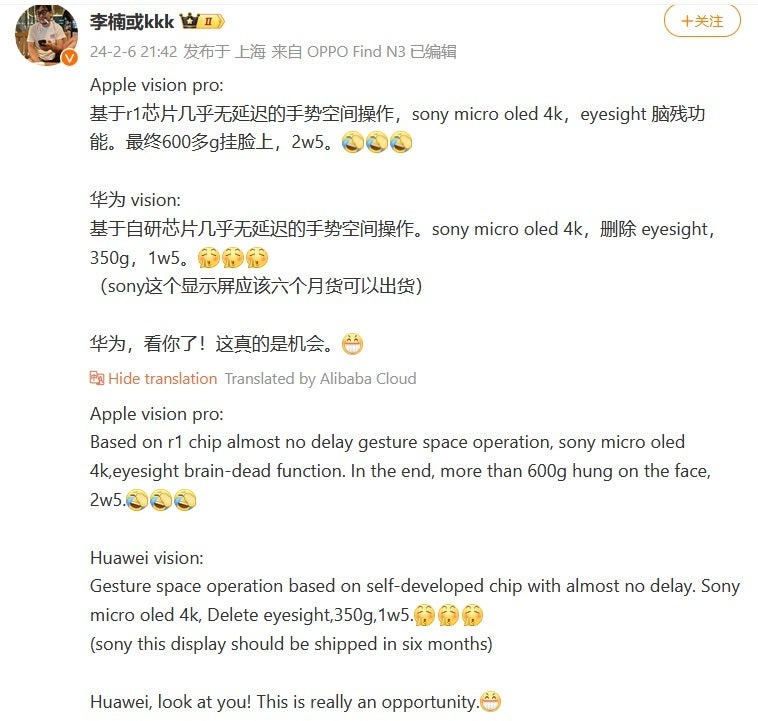Like the Apple Vision Pro, the Huawei Vision will be equipped with 4K Sony micro-OLED panels. There will be important differences between the two headsets as Huawei’s will not have a feature similar to Apple’s EyeSight which allows those near a Vision Pro user to see a representation of the user’s eyes. And while Huawei was able to shock the world by launching the Mate 60 series last August with its first 5G chip since 2020, Apple’s Vision Pro is bound to have a huge edge in performance with its M2 and R1 chips.


Li Nan’s Weibo post and a Weibo-based translation
The current rumor states that Huawei will depend on its own chips (probably developed by its HiSilicon semiconductor unit) although it is hard to see how Huawei will be able to obtain any cutting-edge chips. China’s largest foundry, SMIC, is unable to obtain an extreme ultraviolet lithography (EUV) machine due to U.S. sanctions and that tool is needed to produce cutting-edge SoCs. Still, SMIC will supposedly be able to produce 5nm chips for Huawei later this year using its currently-owned deep ultraviolet lithography machines.
How Huawei is able to obtain the chips needed to make Huawei Vision a Vision Pro “rival” will probably make for an interesting story once the word gets out. But for now, Huawei is reportedly going to offer a spatial computer of its own that is nearly half the weight and is expected to be half the price of Vision Pro. At an expected price in the range of $1,750, if it turns out to be more than half as capable as Apple’s Vision Pro, Huawei might be on to something.
#Huaweis #Vision #Pro #rival #rumored #weight #price


